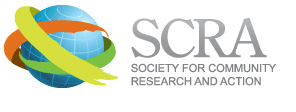Submitted by: Megan Granski, Shabnam Javdani, Valerie R. Anderson, Roxane Caires
Highlights
Treatments and programs in the juvenile justice system may not work as well for girls as they do for boys.
────
Programs must be understood in context including different program format types (individual, group, family) and program emphases (cognitive, behavioral, family systems).
Adolescents with mental health challenges and experiences of trauma (like police contact) are at increased risk for entering the juvenile legal system. This is especially the case if youth are from racially oppressed groups. While we typically think about boys when we think of juvenile justice, girls are faring worse than their male peers. Girls have also been a largely invisible group in legal programming research.
The juvenile legal system claims to rehabilitate youth by connecting them to (often mandated) programs. However, we know that there is huge variability in how effective these interventions are at supporting kids. Until now, we have not understood whether the format of intervention delivery matters, and how it matters for of girls in particular.
This study tries to understand the effectiveness of intervention programs. We sort programs by their delivery format (individual, group, family, and multi-format); and we compare program effectiveness for boys and girls.
“For both boys and girls, the most effective interventions had a multimodal or group format, provided cognitive skills or family systems interventions, were more length intensive with regard to time in weeks, and targeted younger youth. However, group programs and cognitive skills interventions had stronger effects for boys.”
Methods
We identified an initial set of 2,332 studies, and narrowed the list down to include only those that:
- reported information about youth (<18 years)
- included girls
- reported the results of intervention outcomes for programs designed to reduce disruptive behavior and/or risk for legal outcomes.
The final sample included 167 unique effects from 29 different studies (28,483 youth; 50% female; median age: 14). A team of trained researchers coded these rigorous studies into meta-analysis software.
How Did A Community Psychology Perspective Inform Your Work?
Community Psychology emphasizes a focus on diversity and social justice. This influenced our goal of including girls in research that usually excludes them. Community Psychology principles also emphasize access to resources and a “right to childhood”. This motivated our goal of focusing on program effectiveness to equip practitioners and policy makers with the best available information to ensure that systems focus towards promoting access to treatment resources and away from incarceration and punishment.
Results
- Like other studies, we found that the overall effect for programs was positive and moderate.
- However, girls fare worse in particular program formats.
- Group programs are the most popular format of delivery, but significantly less effective for girls compared to boys.
- Multi-format interventions have higher average effects on reducing behavioral mental health challenges for both boys and girls. However, fewer programs of this kind exist for girls.
- Programs that support youth in problem solving, perspective taking, goal setting, and seeing the family as a system, are better than programs that just focus on asking youth to change their behaviors.
What Does This Mean For?
Research and Evaluation: Few prior studies emphasize the role of race and gender disparities in program impact or acknowledge how systemic racism and patriarchy can dictate which adolescents end up arrested and incarcerated. Researchers can hold one another accountable for reporting means and outcomes of interventions separated by gender and major racial / ethnic categories. Very limited related research breaks down sexual and gender minority characteristics of their samples. We hope to encourage this research given the increased odds that these youth are at higher risk for legal and mental health issues.
Social Action: Programs designed to address disruptive behavior problems may not include strategies that particularly benefit girls. Gender-responsive elements include a focus on safe relationships, resource access, trauma-informed components that recognize girls’ history of victimization, and an emphasis on understanding girls’ intersectional and multiple marginalized racial and ethnic identities. Alongside creating and evaluating this intervention base, we also advocate for de-carceration for youth and creating more “onramps” to community-based programs that are not part of the formal legal system.
Original Citation: Granski, M., Javdani, S., Anderson, V. R., & Caires, R. (2020). A Meta‐Analysis of Program Characteristics for Youth with Disruptive Behavior Problems: The Moderating Role of Program Format and Youth Gender. American Journal of Community Psychology, 65(1-2), 201-222.



